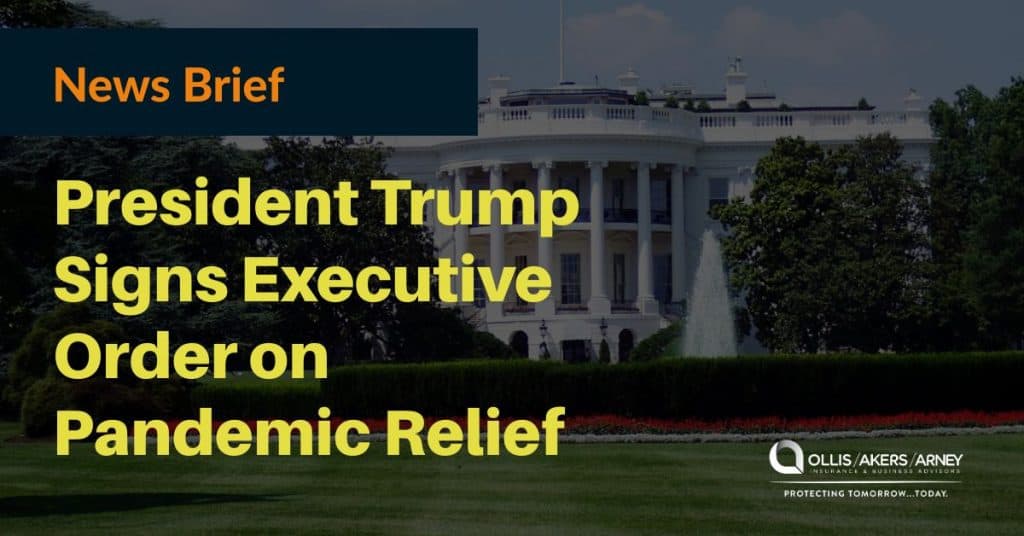President Donald Trump recently signed an executive order and three memorandums to address pandemic relief in response to the ongoing impact of the coronavirus (COVID-19) pandemic. After negotiations for a relief package between the White House and lawmakers collapsed, the executive actions extend pandemic unemployment benefits, student loan payment deferrals, eviction protections for renters and payroll tax cuts.
Actions Extend Unemployment Benefits
One of the memorandums signed extends federal unemployment benefits. This action creates a new benefit of $400 per week into December—which is a decrease from the previous unemployment insurance of $600 per week. The $600 amount received approval in March and was scheduled to expire at the end of July. According to Trump, states will be responsible for covering 25% of costs, or $100 per week, per individual.
Much of the workforce affected by COVID-19 has been reliant on unemployment benefits, which were scheduled to expire at the end of July. Congress and the White House had been negotiating a broader pandemic aid package, with unemployment benefits discussed as a core component. In the absence of an agreement, these actions were taken by Trump to address an extension for pandemic relief programs.
Student Loan Payments, Eviction Protections, Payroll Tax Cuts Addressed and Potential Challenges
Included in the series of executive actions was an executive order addressing eviction protections for renters. The executive order notes the impact that COVID-19 has had on housing, and extends the federal moratorium through 2020, offering protections for renters. This moratorium had also expired in late July. One of the memorandums issued addresses student loan payment deferrals. Payments on federal loans were suspended through September, and Trump’s memorandum extends payments through the end of 2020. Lastly, Trump issued a memorandum deferring payroll tax obligations through 2020, directing the Treasury Department to allow employers to defer payments for the employee portions of specific payroll taxes.
Generally, federal funding is controlled by Congress, leading to potential challenges for these executive actions.
Stimulus Relief Efforts
These executive actions did not address stimulus checks. The U.S. Senate has brought bills forward with stimulus relief as part of a broader pandemic relief package. Discussions regarding stimulus checks may extend into August and September.
For help with other questions or business services contact Ollis/Akers/Arney Insurance & Business Advisors.


